A test charge 'q' is moved without acceleration from A to C along the path from A to B and then from B to C in electric field E as shows in the figure. (i) Calculate the potential difference between A and C. (ii) At which point (of the two) is the electric potential more and why ?
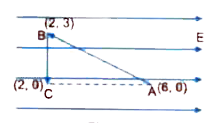
(i) As electric field is a conservative field, work doene in moving the test charge q is exactly same along the path ABC or along straight path AC.
Distance AC=→r=−4ˆi, and force applied against the electric field →Fext=−→Eq=−Eqˆi
∴ Work done WAC=→Fext.→r=[−Eqˆi].[−4ˆi]=+4Eq
∴ Potential difference between C and A
VC−VA=WACq=4Eqq=+4E
(ii) Electric potential at point C is greater i.e., VC>VA.
Topper's Solved these Questions
- ELECTROSTATIC POTENTIAL AND CAPACITANCE BOOK - U-LIKE SERIESCHAPTER - ELECTROSTATIC POTENTIAL AND CAPACITANCE EXERCISE - LONG ANSWER QUESTIONS-I
64 Videos
- ELECTROSTATIC POTENTIAL AND CAPACITANCE BOOK - U-LIKE SERIESCHAPTER - ELECTROSTATIC POTENTIAL AND CAPACITANCE EXERCISE - LONG ANSWER QUESTIONS-II
13 Videos
- ELECTROSTATIC POTENTIAL AND CAPACITANCE BOOK - U-LIKE SERIESCHAPTER - ELECTROSTATIC POTENTIAL AND CAPACITANCE EXERCISE - VERY SHORT ANSWER QUESTIONS
40 Videos
- ELECTROMAGNETICE INDUCTIONBOOK - U-LIKE SERIESCHAPTER - ELECTROMAGNETICE INDUCTIONEXERCISE - Self Assessment Test Section -D
1 Videos
- EXAMINATION PAPER 2020 (SOLVED)BOOK - U-LIKE SERIESCHAPTER - EXAMINATION PAPER 2020 (SOLVED)EXERCISE - SECTION D
6 Videos
Similar Questions
A test charge q is moved without acceleration from A to C along the path form A to B and then from B to C in electric field E as shown in the figure.
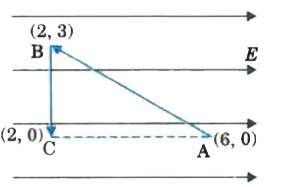
(i) Calculate the potential difference between A and C.
(ii) At which point (of the two) is the electric potential more and why?
View SolutionA test charge q is moved without acceleration from A to C along the path from A to B and then from B to C in electric field E as shown in Fig. (i) Calculate the potential difference between A and C (ii) At what point [of A and C] is the electric potential more and why?
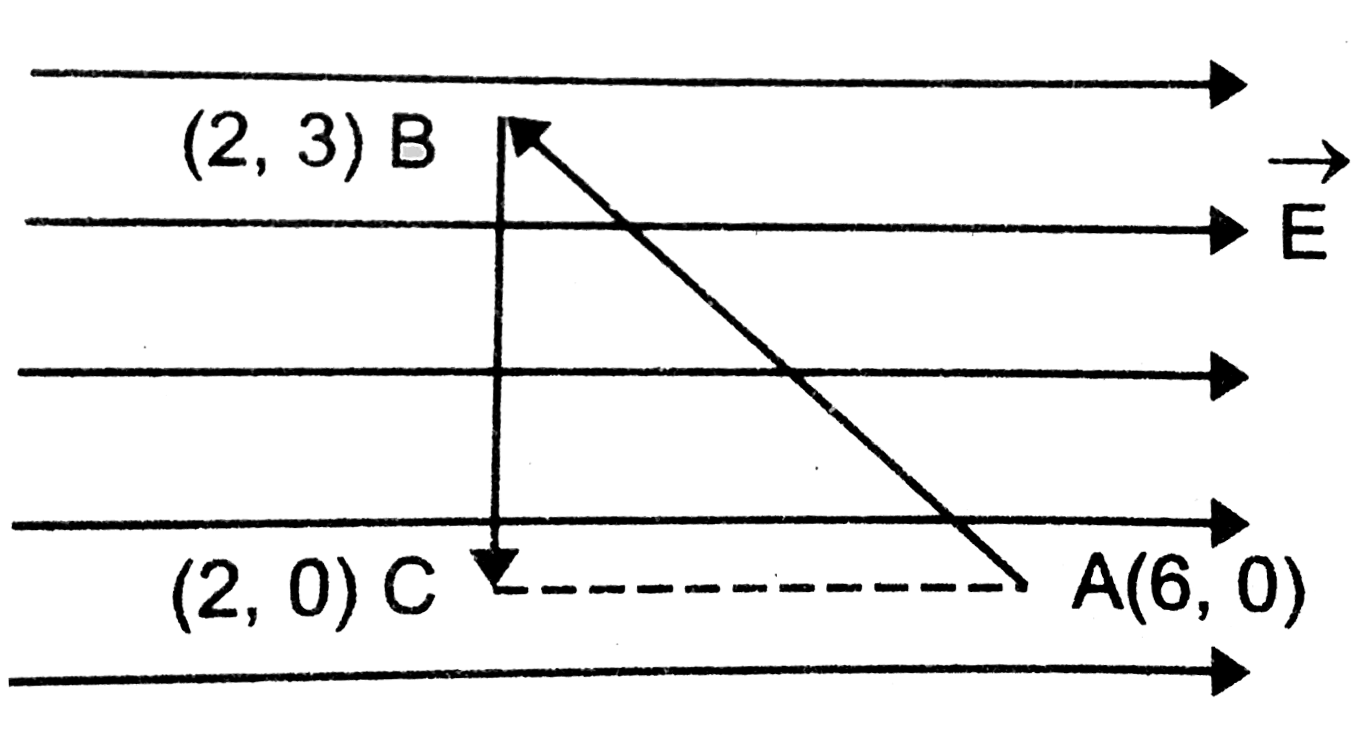
View Solution
Knowledge Check
When a 2μC charge is carried from point A to point B, the amount of work done by the electric field is 50μJ. What is the potential difference and which point is at a higher potential ?
A25V,BB25V,AC20V,BDboth are at same potential.A, B and C are three points in a uniform electric field. The electric potential is
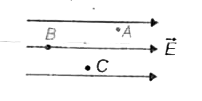 AMaximum at BBMaximum at CCSame at all the three points A, B and CDMaximum at A
AMaximum at BBMaximum at CCSame at all the three points A, B and CDMaximum at AA,B and C are three points in a unifrom electric field. The electric potential is
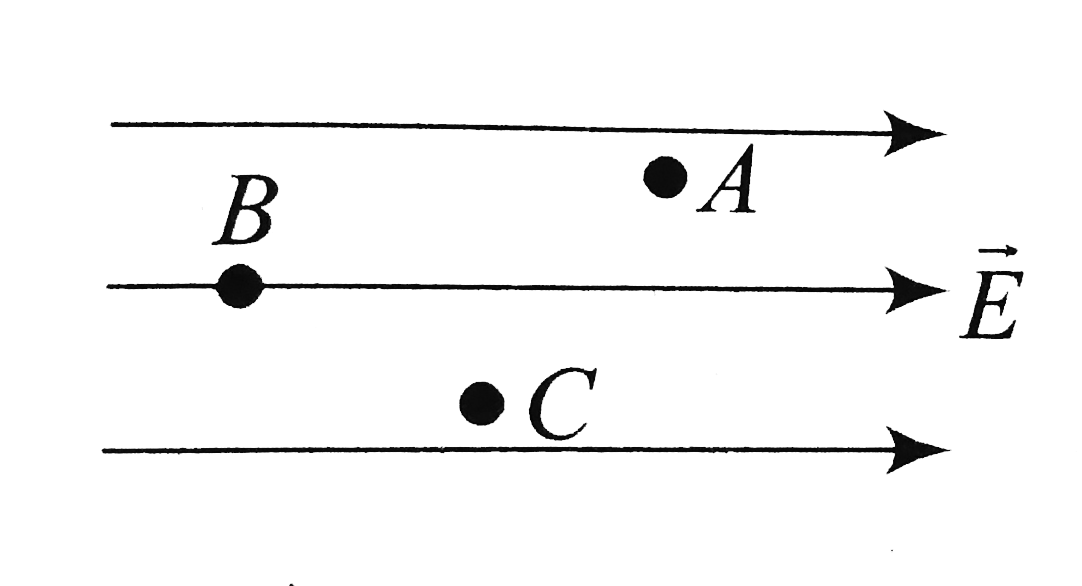 AMaximum at ABMaximum at BCMaximum at CDSame at all three points A,B and C
AMaximum at ABMaximum at BCMaximum at CDSame at all three points A,B and C
A test charge q is moved without acceleration from A to C along the path from A to B and then from B to C in electric field E as shown in Fig. (i) Calculate the potential difference between A and C (ii) At what point [of A and C] is the electric potential more and why?

View SolutionA test charge q0 is moved without acceleration from A to C over the path ABC as shown in Fig.
Calcualate potential difference beetween A and C.
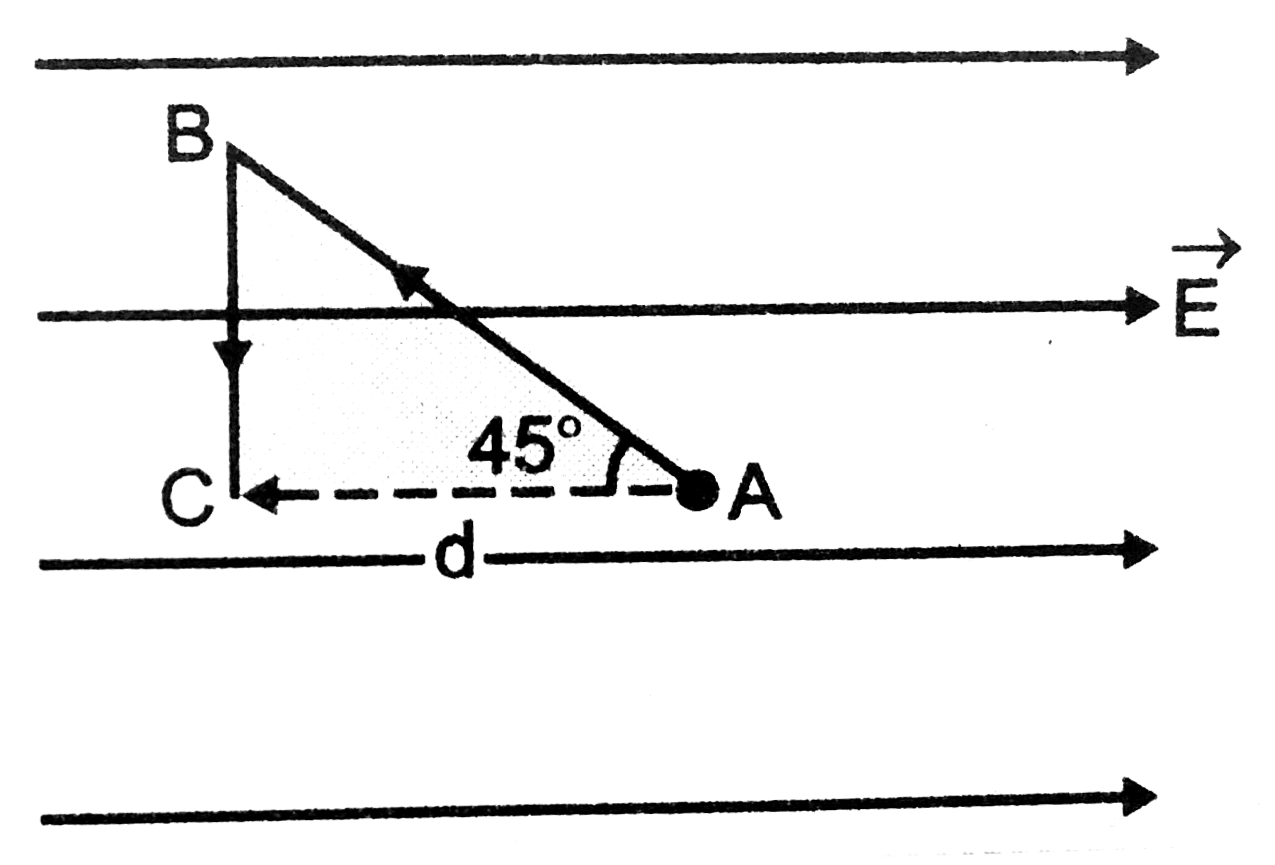
View SolutionA charge of 5 C is moved between two point is an electric field and 20 J of work was done to do so. Calculate the potential difference between the two points.
View SolutionWhen a 2μC charge is carried from point A to point B, the amount of work done by the electric field is 50μJ. What is the potential difference and which point is at a higher potential ?
View SolutionA,B and C are three points in a unifrom electric field. The electric potential is

View Solution
